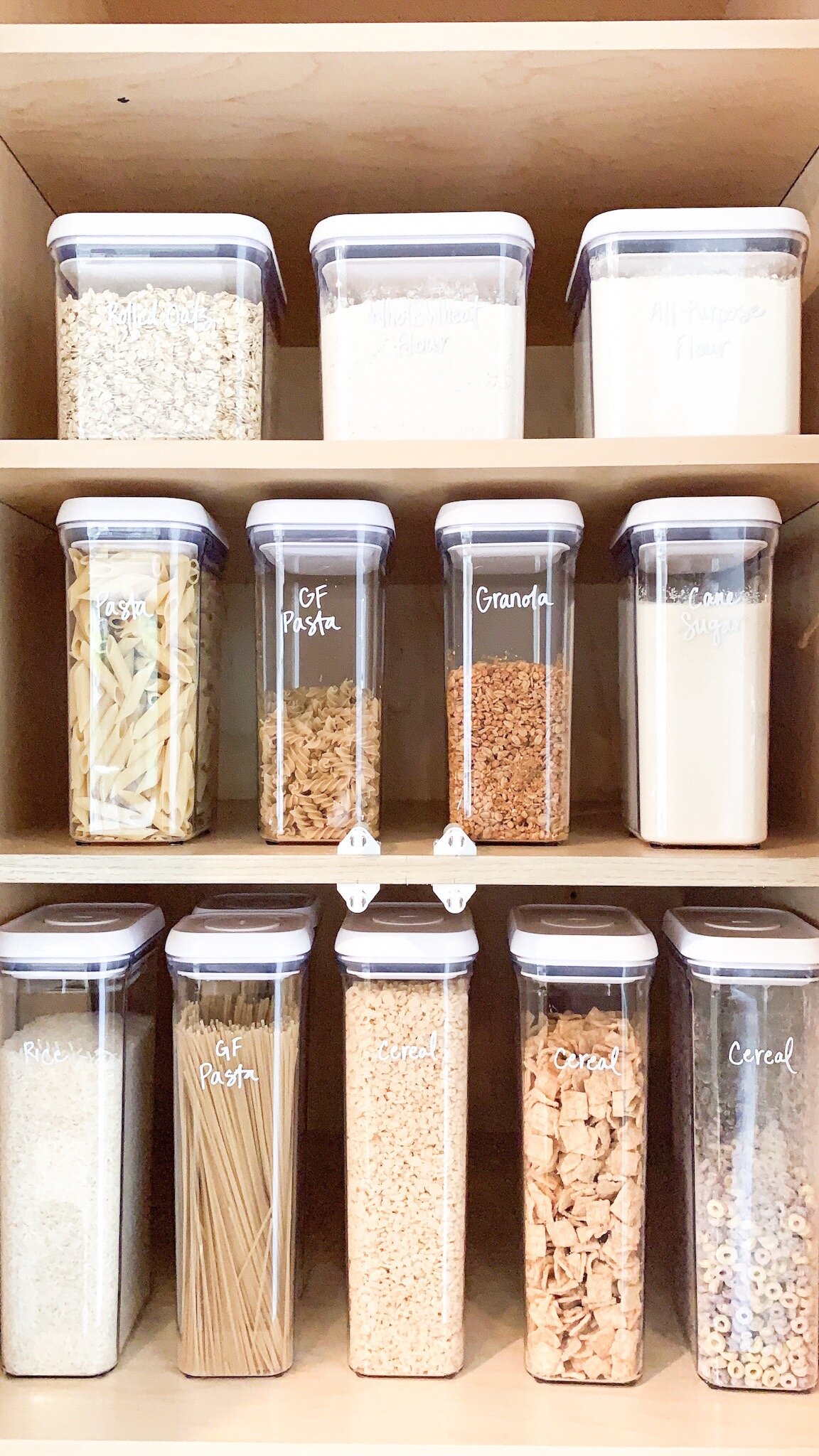5 Rules for Decanting
Decanting is an organizer’s best friend. If you’ve been around for a while, you likely already know this. For those who don’t know about decanting, in organizing, this term refers to taking items out of their original packaging and placing them into (oftentimes clear) glass, plastic, or metal containers. What you might not yet know, however, is why we love decanting so much. This method has become a major trend online in the past year, largely because it’s so satisfying to see. But beyond its looks, decanting food eliminates a large portion of physical, and visual clutter in your pantry. It creates uniformity and actually prolongs the shelf life of most snacks. Basically, it’s both aesthetically pleasing and also highly practical. If you’re looking to elevate your pantry system and start decanting, here are 5 golden rules to follow:
1 Start Small, and Grow With Time
Start by decanting a few essential items in your pantry, rather than going all in on every snack, baking item, and dried good at once. By only decanting key items like flour, sugar, and maybe a few snacks to begin with, you can see how you feel about the decanting process. By not throwing yourself into the process all at once, you can actively avoid overwhelm. Instead, simply dip your toes in the water and test it out. If it works with your lifestyle and you realize how much you truly love decanting, you can grow from there. Slowly but surely, you can completely decant your entire pantry, after easing into the commitment of it.
Here are a few items we often decant:
Pasta
Crackers
Chips
Cereal
Dry lentils and grains
Nuts
Baking ingredients
Spices
pasta canisters
2 Find The Right Containers
Consider the amount of each product that you typically have, and buy your containers based on this. By matching the container size with the amount of product you have, you’ll avoid having to keep items in two places, saving you space. If everything fits properly into the container you want your product to be in, there will be no ‘extra’ product to store elsewhere, and everything can be in one place! This is, of course, a preference for those who need to maximize the space they have, and do not buy in bulk. If you are one to buy in bulk or have leftover product, don’t stress! Just be sure to designate a space or bin for all backstock products. When you need to top up, you can simply “shop” your pantry!
Snack, Lentil, and Grain canisters
3 Clean and Dry
It’s essential to wash and completely dry your containers before using them, whether it’s their first use, or you’re switching foods from one item to another in a container. This will rid the container of any leftover product, germs or bacteria. We recommend leaving your containers out for a day to be sure that they are 100% dry before using them! Moisture will make your food items stale or moldy, or create clumping in your baking goods. Freshly washed and dried airtight containers will keep your foods fresh and in tip-top shape longer, lengthening the life of your products.
Cereal canisters
4 Label and Date
Be sure to label all of the products you’re decanting. This way, you can keep track of all of your items, and know what belongs where. We recommend labeling as loosely as possible if your inventory fluctuates (for instance, don’t label something “Cheez-Its” if you might not buy Cheez-Its all the time—opt for “Snacks” instead!) You should also add when the items were placed in the container and when they expire. Labeling will make your pantry easier to navigate visually, and will make maintaining the systems of organization simple.
Baking canisters
5 Implement a System That Flows
Consider the items you reach for most often, and keep those at eye-level so you can access them easily. Keeping them in a place where you’ll always see them will support easy maintenance over time, because the system is aligned with your everyday routine and lifestyle. Alternatively, keep items that you use less frequently higher up on shelves, or further back. This will make your day-to-day life simple and hassle-free, as your foods will be easier than ever to locate, grab and go!
Spice Containers
While we’re obviously big fans of decanting, it’s important to keep in mind that it just might not suit your lifestyle, and that’s perfectly okay! If you’re someone whose inventory constantly evolves, it may not be sustainable for you over time. If you’re looking to elevate your pantry’s look and want to prolong the life of your food items, though, it’s probably a great solution for you. If you’re worried about the dreaded leftover that didn’t make it into the container, just remember that you can designate a zone up high in your pantry for backstock items.
This process is entirely customizable to your lifestyle, needs, and preferences, which is why we love to decant our clients’ pantries. It’s up to you what you opt to decant, and what you choose not to. There is no right or wrong way to decant products, or store things in your pantry. Our tips are simply here to help you get started on your organizing journey. If you want to learn more about decanting, be sure to check out our Decanting 101 video here! We hope that this process brings joy and ease into your daily routine, and that you love decanting as much as we do!






















